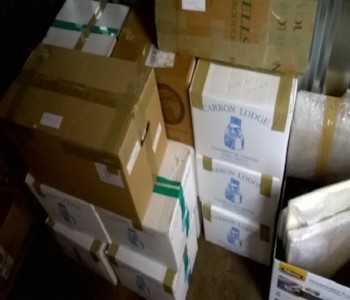To celebrate #GivingTuesday, each week we will highlight a collection available for adoption. Collection adopters help secure the safety and availability of all the Archive’s images and documents for generations to come. Today’s highlighted collection is the Vincent Pargeter Collection. One of the most admired millwrights in recent years, Vincent’s sudden death shocked the mills community. We now have his huge collection of irreplaceable technical drawings, notebooks and photographs and face the task of cataloguing and repackaging these items. The contents of his collection are unique and will be particularly valuable for other millwrights, mills that are still running and the communities surrounding them.

The Vincent Pargeter collection is held in 35 large boxes, occupying some 30 linear metres of shelf space. Reflecting a working life spanning 50 years that was cut off unexpectedly, they are a treasure trove of vital information on the care and construction of the majority of our most important windmills.
The collection includes:
- Elegant, large and detailed, measured millwrighting drawings, drawn by Vincent – who was a master of his subject and had the technical skill needed to record and clearly display the most complex arrangements of machinery and building that characterise windmills. Often assembled following rigorous research, they have been used to reassemble derelict windmills where much fabric and components were missing. They are works of art in themselves as well as historical documents created with profound insight and a respect for what remained. They are also an essential aid for future custodians of these important buildings.
- Notebooks of detailed research and records of work carried out or planned on some 100 windmills. These provide invaluable insight into the millwrighting process, the selection of materials and the need to ensure safe and appropriate repairs.
- Photographs, field notes and sketches carefully dated and showing how much work was needed, sometimes over several years, to rescue and preserve these monuments, each unique and a reflection of the regional style and technology of its time. They capture an important moment in the history of the community around the windmill, marking a shift from continuing decay to sensitive care.
- Vincent’s work and his records are unique in their detail and breadth and offer a blueprint for other millwrights and heritage specialists to restore not only the windmills he was involved in, but others built in a similar style. His collection offers insights and vital recordings for the communities surrounding a mill who would otherwise not have access to this information about their own heritage, as well as wider researchers of mills, milling and related academic disciplines such as architecture and engineering.
To find out more about adopting a collection and to browse all the adoptable collections, click here.


